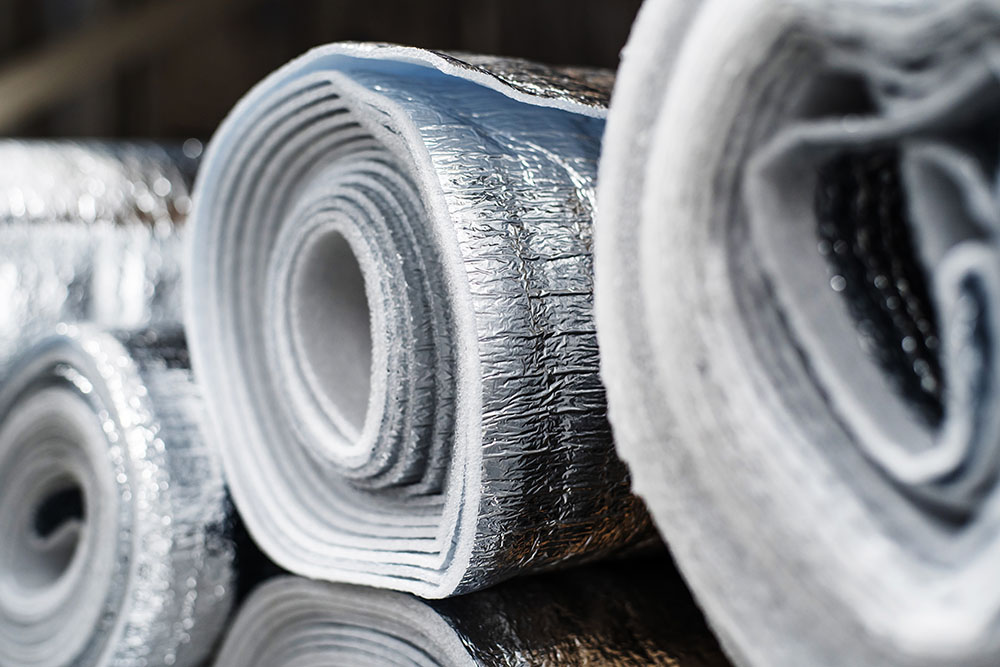What Is Thermal Insulation?

CONTENTS
- Understanding thermal insulation
- The physics of heat transfer
- Common materials used for thermal insulation
- Innovative insulation technologies
- Evaluating insulation performance
- Energy efficiency and environmental impact
- Frequently asked questions
- Get in touch
Whether you are a homeowner or a commercial company looking to improve energy efficiency for your property, understanding thermal insulation is key to creating comfortable and sustainable living and working spaces. These materials are integral to the structural stability of your building.
At ICE Thermal, we provide a range of thermal insulation services, including thermal insulation installation. Our trained technicians will work closely with you to ensure the installation process is smooth and professional.
Read on to learn more about thermal insulation and why it is an integral aspect of modern construction.
Understanding thermal insulation
Thermal insulation slows the escape of warmth in winter and keeps out the heat during summer. It also reduces your energy bill costs, making your property more energy-efficient.
Well-placed insulation can decrease heating costs massively, encouraging eco-friendly living since we use less energy and pump out fewer greenhouse gases into our atmosphere.
The key to this effectiveness is in materials that have poor thermal conductivity. These work by trapping air in foam or reflecting radiant energy with special foils. Polystyrene, for example, uses tiny air bubbles in its structure to resist heat transfer, making it an excellent insulator.
The physics of heat transfer
Thermal insulation in buildings aims to keep the heat exactly where you want it, using three crucial steps: conduction, convection, and radiation.
Conduction is when heat travels through the material. Convection happens when fluids fluctuate their temperature — warm air rises and cold air dives, affecting everything from weather patterns to how well your central heating works.
Radiation uses invisible rays to carry energy, similar to how the sun sends heat to a planet. Together, these steps create a cycle of heat transfer and insulation, ensuring your building stays warm for hours for less money.
Common materials used for thermal insulation
When creating energy-efficient buildings, thermal insulation plays a critical role. It involves using materials designed to reduce heat loss or gain by providing a barrier between areas significantly different in temperature. The choice of insulation material can greatly influence its effectiveness and suitability for various applications.
Fibreglass
Fibreglass, made from fine strands of glass woven into an insulating material, is one of the most commonly used types. Its primary advantage lies in its ability to minimise heat transfer at a relatively low cost while being fire-resistant.
Mineral wool
Another popular option is mineral wool, which can be either Rockwool (made from basalt) or slag wool (made from furnace slag). This type offers excellent sound absorption and good thermal performance, but may require additional fireproofing measures compared to fibreglass.
Polyurethane foam
Polyurethane foam provides high levels of thermal resistance due to its comprehensive coverage and lack of seams that allow air infiltration. It comes as rigid panels or spray foam applied directly, expanding and hardening into place, creating an effective barrier against heat loss and moisture intrusion.
Natural fibres
Eco-conscious homeowners might prefer natural fibres like cotton, sheep's wool, straw, and hemp for their lower environmental impact during production and disposal. But, they generally offer less insulative value than synthetic counterparts.
The selection should ideally depend on factors like local climate conditions, installation requirements, and budget constraints unique to each property owner. Therefore, understanding the properties and performance of these common insulation materials can be integral in making an informed decision.
Innovative insulation technologies
As technology and new strategies develop, traditional fibreglass will phase out. Innovative approaches such as aerogel, a lightweight substance that enhances thermal insulation and minimises property costs, are increasingly appearing on the market.
Others include vacuum insulation panels, which use a core panel sealed under low pressure to reduce heat transfer by conduction and convection.
Phase-changing materials (PCMs) are other advanced materials that absorb or release heat as they change from liquid to solid and back again, which helps maintain a steady temperature.
Evaluating insulation performance
To gauge how well an insulation job is done, we use R-values and U-values to create a valuable document for the property owner. This tracks how the insulation is performing and when it requires maintenance.
R-values measure thermal resistance by dividing a material's thickness by its lambda value - the product's thermal conductivity. A good result for an R-value is a high number with a low thickness, showing that it can reduce heat loss without increasing its mass.
U-values show the ability to transfer heat to and from areas of the building. Good results should show lower values, meaning the building elements are well-insulated.
We use these values because they let us discover the correct materials and measurements for a specific building. They are crucial digits that help to create a comfortable environment all year round.
Energy efficiency and environmental impact
One of the most effective ways to reduce energy bills and save money in the long run is by ensuring that your home is well-insulated. This means that walls, roofs, floors, and windows are properly sealed and protected from the elements.
With the correct insulation materials and techniques, you can significantly improve your property's energy efficiency and reduce your overall energy consumption. Studies have shown that well-insulated homes can reduce energy bills by up to 20% - significant savings for any property.
By reducing the heat that escapes your building during the colder months and preventing cool air from seeping in during the summer, you can maintain a comfortable temperature inside your home without having to rely on your heating or cooling systems as much.
In addition to saving money on your energy bills, a well-insulated home can provide several other benefits. For example, it can help to reduce noise pollution from outside, improve indoor air quality by preventing drafts and leaks, reduce carbon emissions, and increase the overall value of your property.
Frequently asked questions
What is the best thermal insulation?
Aerogel is the best type of insulation, but it is expensive.
What is the best insulation to keep heat out?
Reflective or radiant barriers work against heat, bouncing it off instead of absorbing it.
Does thermal insulation reduce cold?
Thermal insulation traps warmth inside, keeping cold air out.
What type of insulation is the warmest?
Fibreglass is a great heat insulator and acoustic insulator. Mineral wool is also a good choice, both ranking high with R-values.
Get in touch
ICE Thermal provides high-quality thermal insulation installation services. Our experts are well-versed in insulation installation, ensuring your home stays warm in the winter and cool in the summer.
Our ICE Thermal team are available to discuss the various thermal insulation services and can be reached at 020 3376 4802 or [email protected]. We work nationwide, bringing our services to you 24/7, all year round, meeting your needs in emergencies and rapid work.

Speak with me today,
I’m here to help
By asking you a few questions either via phone or email I can immediately provide a realistic estimation of the cost.
You’re in good company. We’ve cleaned for the following commercial clients… View all

Why choose us?
- Cater to a wide variety of cleaning situations
- Nationwide coverage, available 24/7
- Cater to commercial and domestic clients
- Free survey provided prior to quotation
- Emergency response team
- Offer a bespoke service designed to suit all your needs
- All technicians hold professional health and safety qualifications, including BICSc, IOSH, Dewpoint Professional & Safe Contractor
We’re fully accredited
We place best practise, professional expertise and health and safety at the core of our business. We’re fully compliant with all legal obligations. You can view a list of our accreditations below, or visit our Health & Safety page for more information.











-RGB-small.1707319151.jpg)




















